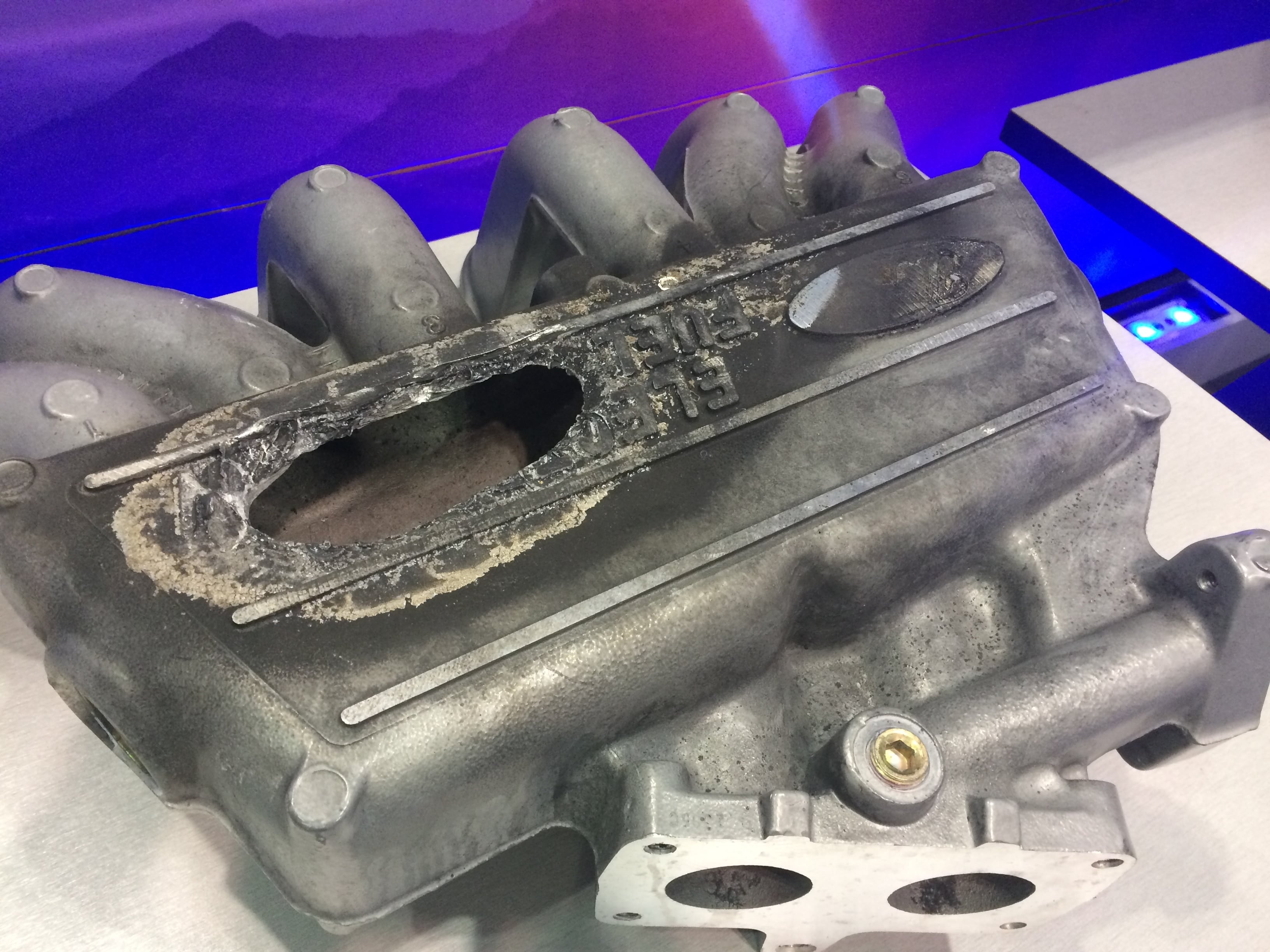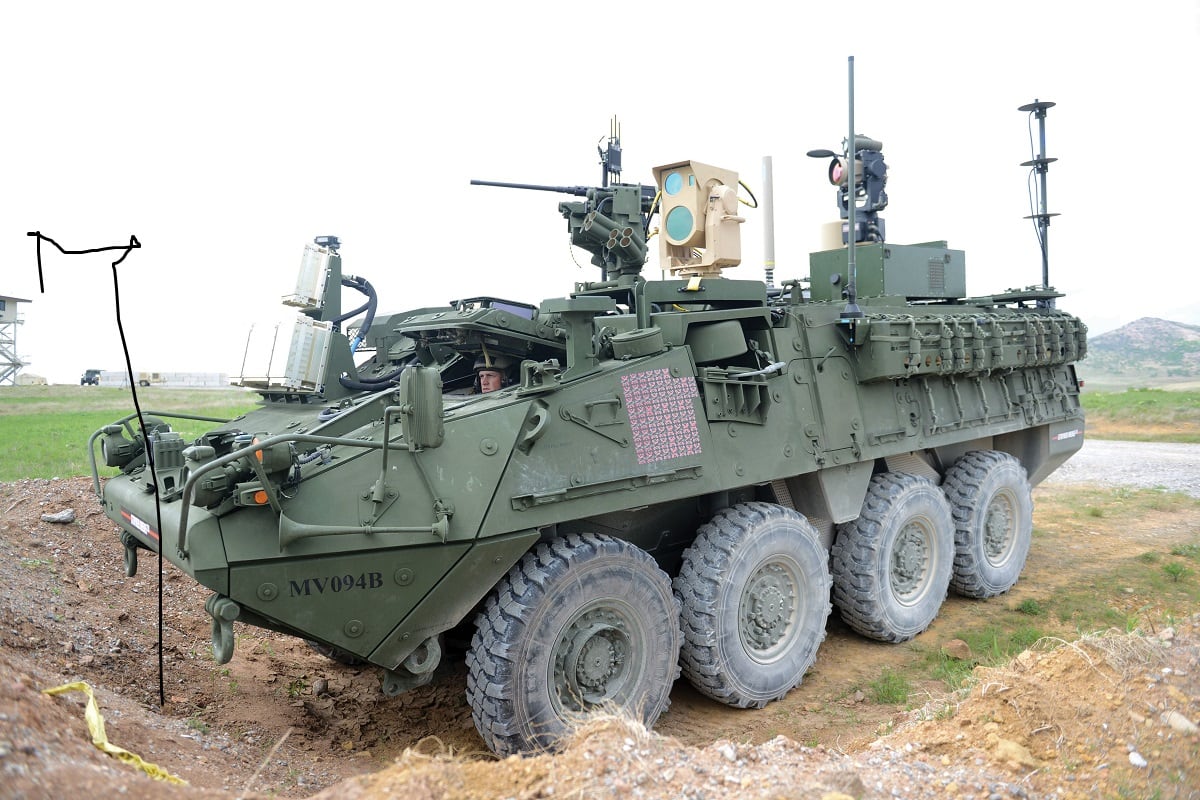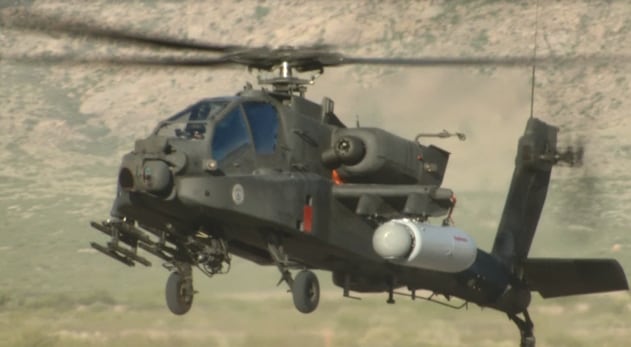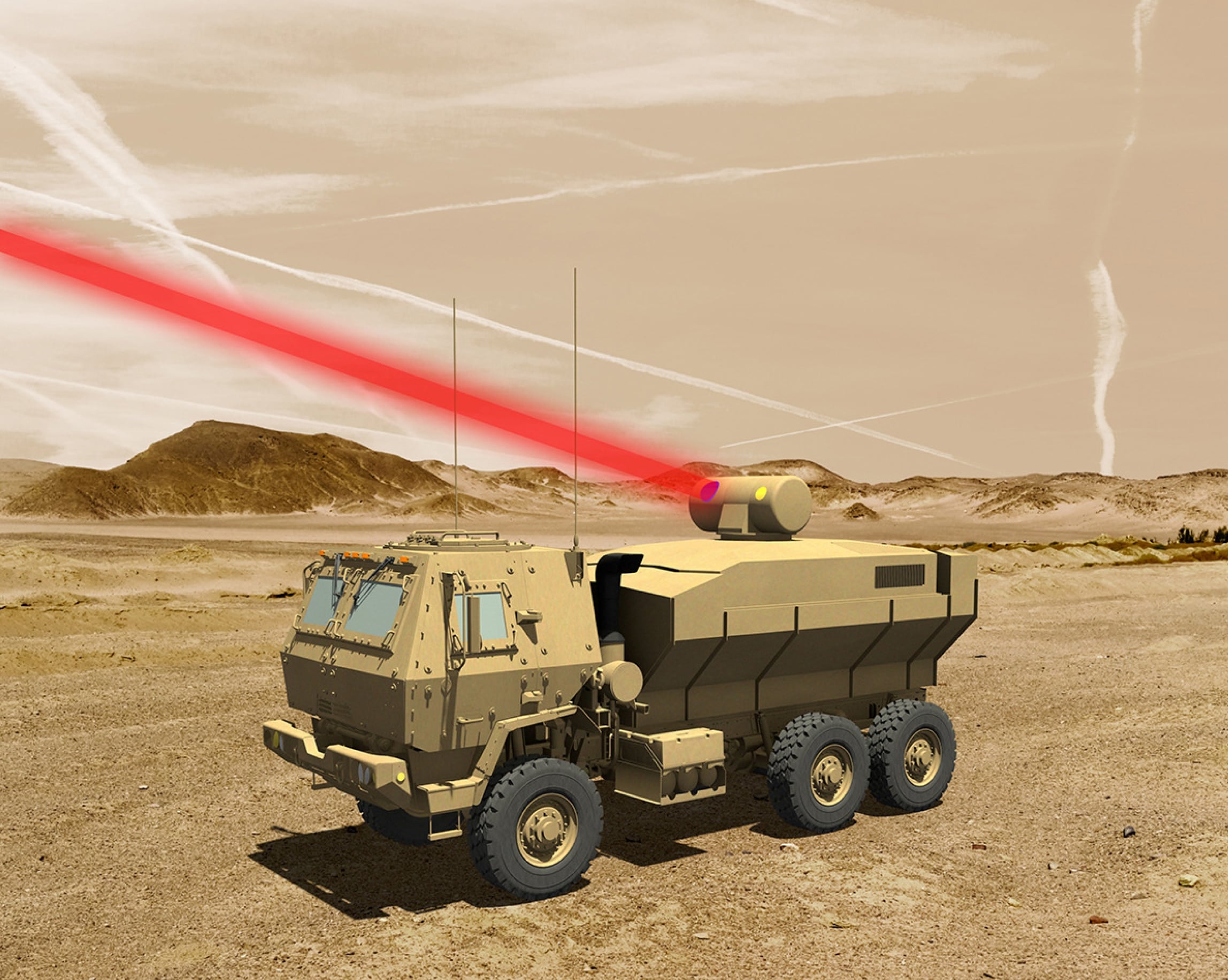HUNTSVILLE, Alabama — Raytheon and a Lockheed Martin-Dynetics team are now locked in a head-to-head battle to build a powerful 100-kilowatt laser for the U.S. Army, pushing the envelope on directed-energy capability development.
And the Army is moving full-speed ahead with plans to select one winner to integrate its laser system onto the Family of Medium-Tactical Vehicles, or FMTV, in early 2019.
RELATED

The effort will culminate in a test of the entire system in 2022 at White Sands Missile Range, New Mexico. The Army began its effort to get a more powerful laser onto a vehicle less bulky than a Heavy Expanded Mobility Tactical Truck in 2016.
Raytheon announced last month that it had won a $10 million contract to develop a laser for the Army’s High Energy Laser Tactical Vehicle Demonstration program.
Dynetics released a statement Aug. 6, just ahead of the Space and Missile Defense Symposium in Huntsville, Alabama, revealing it had won, along with its partner Lockheed Martin, the second $10 million development contract to build a laser for the HEL TVD program.
The contract to integrate the laser system onto an FMTV is expected to be valued at $130 million.
RELATED

The HEL TVD program is a science and technology demonstration program that will work toward incorporating a laser into the Army’s Indirect Fire Protection Capability Increment 2 that aims to defend against rockets, artillery and mortars as well as cruise missiles and unmanned aircraft systems.
Laser weapons for platforms like IFPC Inc. 2 are being hotly pursued because regular interceptors quickly run out and are expensive. A laser weapon will have a much larger number of shots depending on power availability and would be far less expensive to fire at a threat than a missile.
“The beauty of this system is that it’s self-contained,” Roy Azevedo, Raytheon’s vice president of intelligence, reconnaissance and surveillance systems within the company’s Space and Airborne Systems business unit, said about its offering. “Multi-spectral targeting sensors, fiber-combined lasers, power and thermal subsystems are incorporated in a single package. This system is being designed to knock out rockets, artillery or mortar fire, or small drones.”
Huntsville-based Dynetics will serve as the prime contractor responsible for final assembly and testing of the laser system and will use its experience of systems engineering, manufacturing, test and vehicle modifications for integration on the FMTV to also integrate the laser system.
Dynetics is already involved in the FMTV-based Multi-Mission Launcher development that is part of the Army’s IFPC Inc. 2 capability.
Lockheed Martin will supply the laser subsystem as well as other key elements, and will serve as the lead systems integrator.
RELATED

The spectral beam-combined fiber laser subsystem that Lockheed is developing for the program uses the company’s experience gained from the Army’s Robust Electric Laser Initiative program as well as the ATHENA and ALADIN laser programs, among other efforts within the Air Force and the Navy.
“Dynetics, Lockheed Martin and our partners are looking forward to providing a safe and simple high energy laser weapon system that crews can operate for years to come and across various terrains,” Ronnie Chronister, Dynetics vice president of contracts, said in a statement. “We pulled together a stellar team who have the expertise and knowledge to understand exactly what is needed. We believe that our solution will be straightforward and will be the type of system that will preferred by the Army.”
RELATED

Chronister told Defense News in an interview that Lockheed was a great teammate for the project because the company has essentially “broken the code” on laser manufacturing.
For Chronister, getting under contract to develop a 100-kilowatt laser for an FMTV has been a long time coming. Chronister previously worked on laser programs at Army Space and Missile Defense Command. “This was a program that even six years ago had a lot of promise,” he said, adding that the command has worked hard to bring real technology forward and that “the risk from a technology perspective is much lower than it ever has been.”
Jen Judson is an award-winning journalist covering land warfare for Defense News. She has also worked for Politico and Inside Defense. She holds a Master of Science degree in journalism from Boston University and a Bachelor of Arts degree from Kenyon College.






